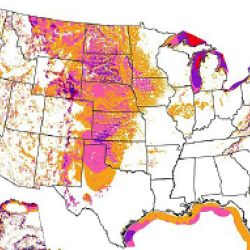Source Institutions
Source Institutions
Add to list Go to activity
Activity link broken? See if it's at the internet archive

In this sunny day experiment, learners measure and compare how quickly light and dark colored materials absorb heat. An extension included in this activity guide suggests learners next design and conduct a scientific investigation using water and soil to understand how land and bodies of water heat up at different rates.
- Under 5 minutes
- 10 to 30 minutes
- $5 - $10 per group of students
- Ages 8 - 14
- Activity, Experiment/Lab Activity, Lesson/Lesson Plan
- English
Quick Guide
Materials List (per group of students)
- water
- soil
- tubs for water and soil
- thermometers or temperature probes
- light bulb to produce heat
- streamer to detect air movement
Subjects
-
Earth and Space Science
-
Earth Processes
- Weather and Climate
-
Earth Structure
- Oceans and Water
- Atmosphere
- Earth, Moon and Sun
-
Earth Processes
-
Mathematics
-
Data Analysis and Probability
- Data Analysis
- Data Collection
- Data Representation
-
Measurement
- Rate
-
Data Analysis and Probability
-
Physical Sciences
-
Heat and Thermodynamics
- Heat and Temperature
- Heat Transfer
-
Energy
- Energy and Power
-
Vibration and Waves
- Light and Optics
-
Light and Optics
- Sunlight and Color
-
Heat and Thermodynamics
-
The Nature of Science
-
The Scientific Process
- Asking Questions
- Conducting Investigations
- Gathering Data
- Formulating Explanations
- Communicating Results
-
The Scientific Process
-
The Nature of Technology
-
The Design Process
- Problem Solving
- Troubleshooting and Maintenance
-
The Design Process
Informal Categories
- Nature and Environment
Audience
To use this activity, learners need to:
- see
- see color
- read
- touch
Learning styles supported:
- Involves teamwork and communication skills
- Involves hands-on or lab activities
Other
Includes alignment to state and/or national standards:
This resource is part of:
Access Rights:
- Free access
By:
Rights:
- All rights reserved, University of Illinois, 2009
Funding Source:
- 3M Foundation
